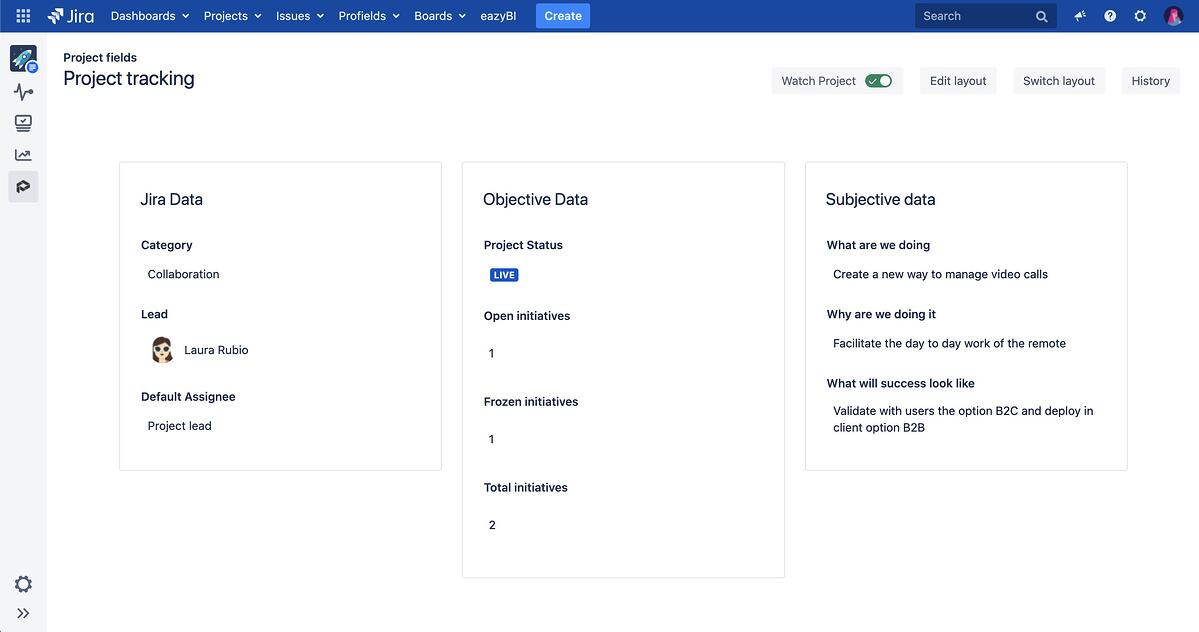
In order to achieve effective project tracking, it's necessary to do it based on data; in this blog post we will break down each type of data that must be monitored and controlled when tracking a project, and we'll present an approach on how business software tools as Jira can help us following this information.
When tracking projects, it is necessary to collect all possible information about them and make them available to each interested party in a centralized way, since the management processes provide tangible products (outputs), which must be added to projects in order to share the objectives (expected outcomes).
![]()
We have kick-started this series of project monitoring blogs with the data, based on the pillars of the Project Tracking Bow above,
In addition to this, there is information around a project which is also recommended to centralize. We can divide it into two types:
Objective data is everything can be measurable, quantifiable, and/or be compared. They must be supported by something real. Objective data can also be the result of a process, or the result of a calculation.
Subjective data is all the information around a project generated from conversations and whose main objective is to give context to the project or to the data related to the project.
Deciding whether a data is subjective or objective will depend in any case of its origin: if it is something measurable it will always be objective and, otherwise, it will be a subjective, e,g.:
A Product Manager and his team are creating a new way to manage video calls with the mission to ease day-to-day remote working; he wants to know the status of his product. We start from two open initiatives:
|
|
|
Open initiatives = 1
|
|
As we mentioned at the beginning, it's recommended the tracking of projects should be done in a centralized way, it will allow monitoring objective and subjective data in a simpler way, and it will be available to all people involved in the project.
Trespassing this information to a software tool, such as Jira, is possible by adding Projectrak (formerly Profields) to your Jira, that way storing this information will be an easy cake.
As data is the basis of any project tracking, the project fields are the base of Projectrak. In the following screen capture of Projectrak for Jira you can see how to organize this information:
 The project fields Projectrak (previously Profields) brings to Jira, show the types of project data should be tracked.
The project fields Projectrak (previously Profields) brings to Jira, show the types of project data should be tracked.
If you are looking to create total fields, it's also possible with this solution. They can be created through Groovy and Script type fields. In future publications, we will offer you details on how you can achieve this.
Before creating total fields, it's important to organize the information within the tool in an efficient way, and the solution Projectrak offers for Jira project monitoring, it's possible. Below you can find a brief guide that will help you achieve it:
These Stories on Jira Software
No Comments Yet
Let us know what you think